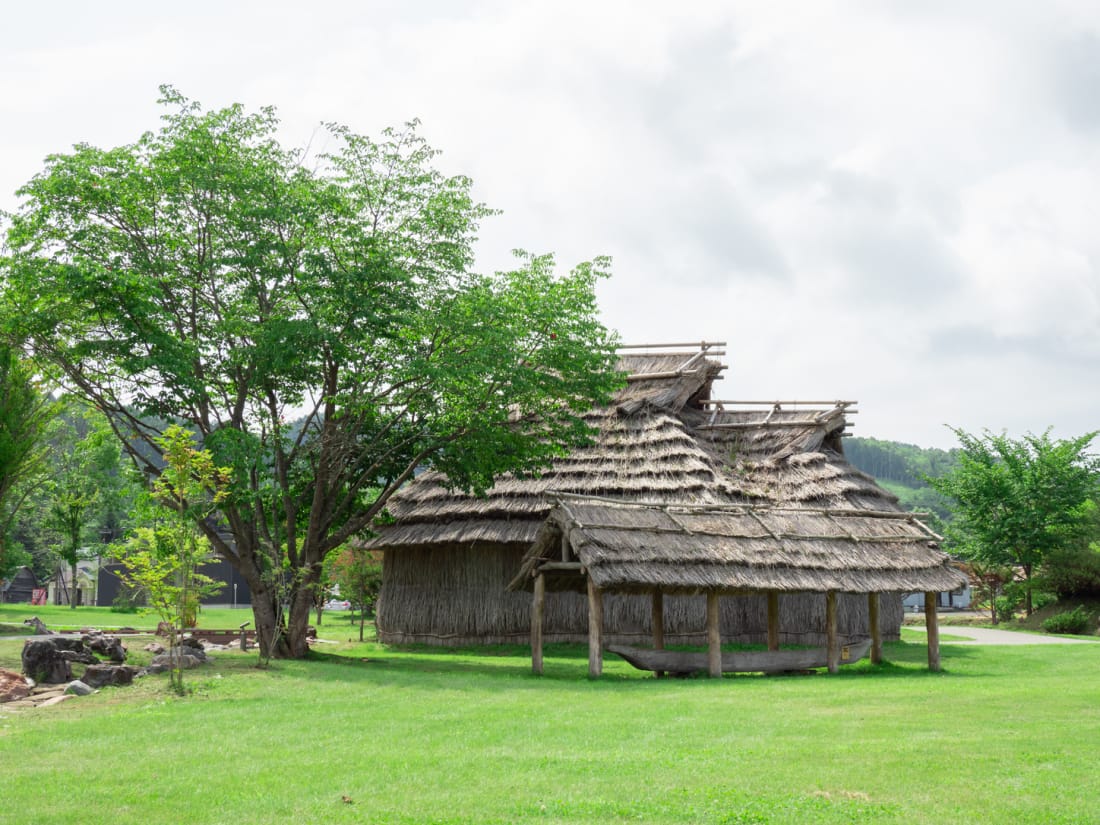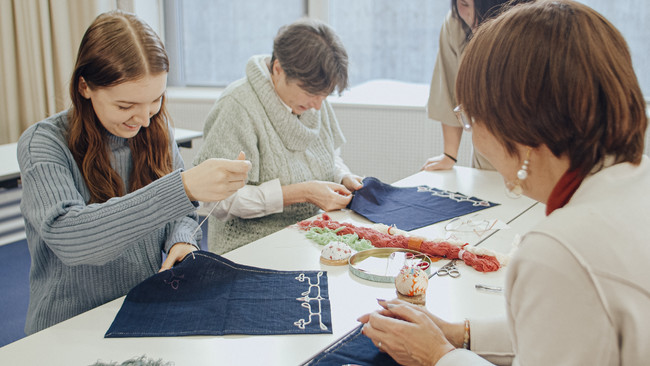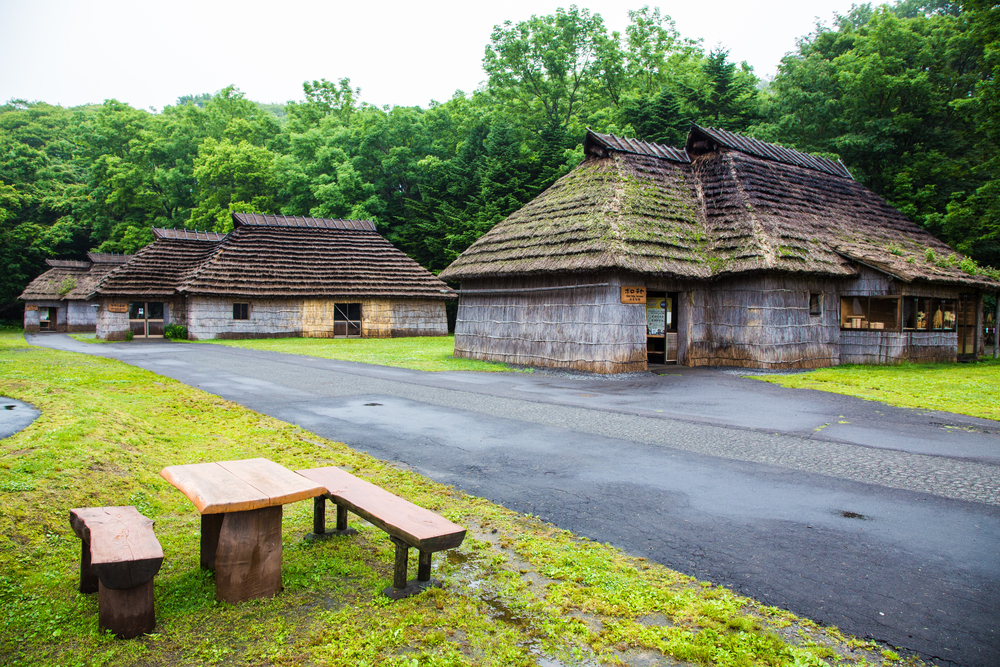Predominantly based in Hokkaido, Ainu are an indigenous people from Japan. Shunted out and forcefully assimilated by their Japanese counterparts, what is left of the culture is preserved by culture centers and the few remaining Ainu.

retirementbonus / Shutterstock.com
Introducing the Ainu
The Ainu are widely thought to have descended directly from Jomon, a Paleolithic civilization that is said to have lasted for more than 10,000 years. Traditionally, Ainu lived a simple life, hunting deer and salmon, gathering wild plants for food, performing traditional dances and playing music. They were fantastic word carvers and craftspeople, with the distinctive Ainu patterns embroidered on clothes and wooden implements from plates to swords.
Ainu have their own religion, believing there is a god (kamuy in Ainu tongue) in everything. The Ainu language, fascinating to linguists for its uniqueness, has been on the verge of extinction since the Meiji Period (1868–1912), when mainland Japanese invaded and tried to drive the Ainu out of their homes.
The Japanese and the Ainu lived a relatively peaceful coexistence until 1879 when the Meiji government decided to modernize Japan. They instigated a number of policies aimed at assimilating Ainu into mainstream Japanese society which included banning the Ainu language and tattoos as well as outlawing deer and salmon hunting.
This fostered a culture that made discrimination against Ainu acceptable. Ainu fought back but gradually the culture became less desirable to practice. Since 1879 they’ve struggled to integrate into the modern Japanese world, with many living in relative poverty.
However, in 2007, the Ainu were finally recognized as indigenous people by UNESCO. This led to official attempts to promote the culture, leading to increased visibility for the Ainu people. On top of that, there was also Golden Kamuy, a popular manga series that introduced the Ainu culture. Rather than just reading about it, though, we recommend visiting some of the places below.

1. Nibutani
Nibutani, a town home to one of the greatest concentrations of Ainu today, lies east of Upopoy on the Saru River and hosts many varied facilities. It’s recommended that guests stay for at least one night in order to fully experience the area.
The kotan is an area which features three different museums, such as Biratori Municipal Nibutani Ainu Culture Museum with nearly 1,000 different exhibits, including two longboats. Within walking distance is an Ainu-inspired restaurant and 10 different restored Ainu houses, which host workshops and talks by local Ainu craftspeople.
 Elsewhere are places where visitors can learn how to make Ainu mouth harps, woodcarving and traditional embroidery.
Elsewhere are places where visitors can learn how to make Ainu mouth harps, woodcarving and traditional embroidery.
Further afield, away from the main area, lies the Yoshitsune Shrine with an attached museum. Considered an important part of Ainu history, legend has it that the warrior, Minamoto no Yoshitsune, fled here and taught the Ainu people boat making and weaving. So significant was he to the Ainu that it is said he was referred to as a kamuy.

Warith82 / Shutterstock.com
2. Lake Akan
Head north-east from Nibutani to Kushiro for Lake Akan. Kushiro is the foggiest area in Japan and Lake Akan holds many Ainu mysteries. It’s also home to around 120 Ainu residents and 36 different dwellings. The crowning glory of the area is its theater, which upholds the Ainu tradition of oral communication, telling stories via drama and puppetry.
Aside from the theater is the craft village, with a range of traditional shops and restaurants. Many places provide guests with the opportunity to create something.

3. Upopoy
Upopoy was newly renovated and reopened in 2020 as the biggest Ainu culture promotion center in Japan. Located in Shiraoi, south-west Hokkaido, it features a traditional Ainu village, exhibition hall and museum. Each offers a different way to learn about the Ainu culture.
In the Ainu village are several replica homes, which visitors may enter and which hold tours each day in order to learn more about Ainu homelife.

Stray Toki / Shutterstock.com
The museum features a permanent exhibition hall and a hall for temporary exhibitions. The permanent exhibition features subjects such as language, the universe, history, work, and exchange. The special exhibition usually covers current research or studies into the lives of Ainu or other indigenous people.
Across the park lies the exhibition hall, which is surrounded by smaller tents with their own interactive, bookable shows. These include a 3D movie and workshops. The exhibition hall hosts traditional Ainu music and dance shows by the Ainu themselves.

Various Images / Shutterstock.com
4. Pirka Kotan
Pirka Kotan is Sapporo’s local Ainu culture promotion center and was the first of its kind in Japan. Located in the southern part of the city, in an area known for its hot springs, it prides itself on being a hands-on museum.
Unlike many other museums, touching the exhibits is encouraged. Visitors can practice pounding rice, throwing vines and more in its main halls. There are two recreations of Ainu homes, including food samples and fire pits. The center also includes an Ainu-style pond, a child-friendly games room and touch panels. In addition to all that, an Ainu piano and other instruments are on hand for visitors to try.
While in Sapporo, also check out one of the Ainu restaurants such as Umizora no Haru, serving up delicious Ainu food.









